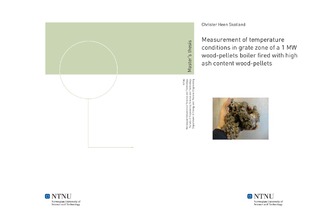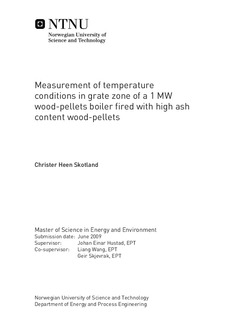| dc.description.abstract | The combustion of biomass could in some cases lead to ash problems induced by high temperatures such as ash sintering, agglomeration and melting. The degrees of these problems depend on the fuel feedstock and are highly dependent on the amount of potassium, sodium and chlorine in the biomass. Straw, grass, bark, branches and wood residues are typical examples of biomass fuels that are connected to the mentioned ash problems.Addition of additives in the problematic fuels is a possible measure in order to reduce the ash problems. This project studies the effect of some additives in a problematic wood pellet fuel and wheat straw. The wood pellet consist of residues from the furniture industry in the Møre area in Norway, and is causing ash problems in several boilers using this fuel. The additives, clay, sewage sludge, marble sludge and paper sludge, are added in 3 to 10 percent addition in the problematic fuels. The melting temperatures of the resulting ash, as well as the sintering tendency of the different fuel and additive mixtures, are analyzed.Melting experiments showed that the melting temperature of wood and straw ash was drastically increased by adding sewage and marble sludge. Clay was more effective for wheat straw than wood pellet. Paper sludge increased the melting temperature to some extent for straw ash, but not for wood pellet.The sintering test revealed an increased sintering for wood pellet with sewage sludge, and a much higher slagging tendency for clay. Marble sludge effectively decreased the sintering of wood pellet ash, even at 1200 °C. Paper sludge did neither reduce the sintering. All additives showed a positive effect on the wheat straw ash sintering, with marble sludge as the indisputable best additive.The wood pellet, and pellet together with 4 and 8 percent addition of sewage sludge, is combusted in a 1.2 MW boiler to investigate if the sewage are able to reduce the sintering and agglomeration of the ash. The combustion rounds showed that addition of sewage sludge drastically increased the amount of sintered and agglomerated ash. The form of the ash changed from hard slag to more porous ash, but the formed ash was still too hard to not cause problems with the ash removal system. | nb_NO |

